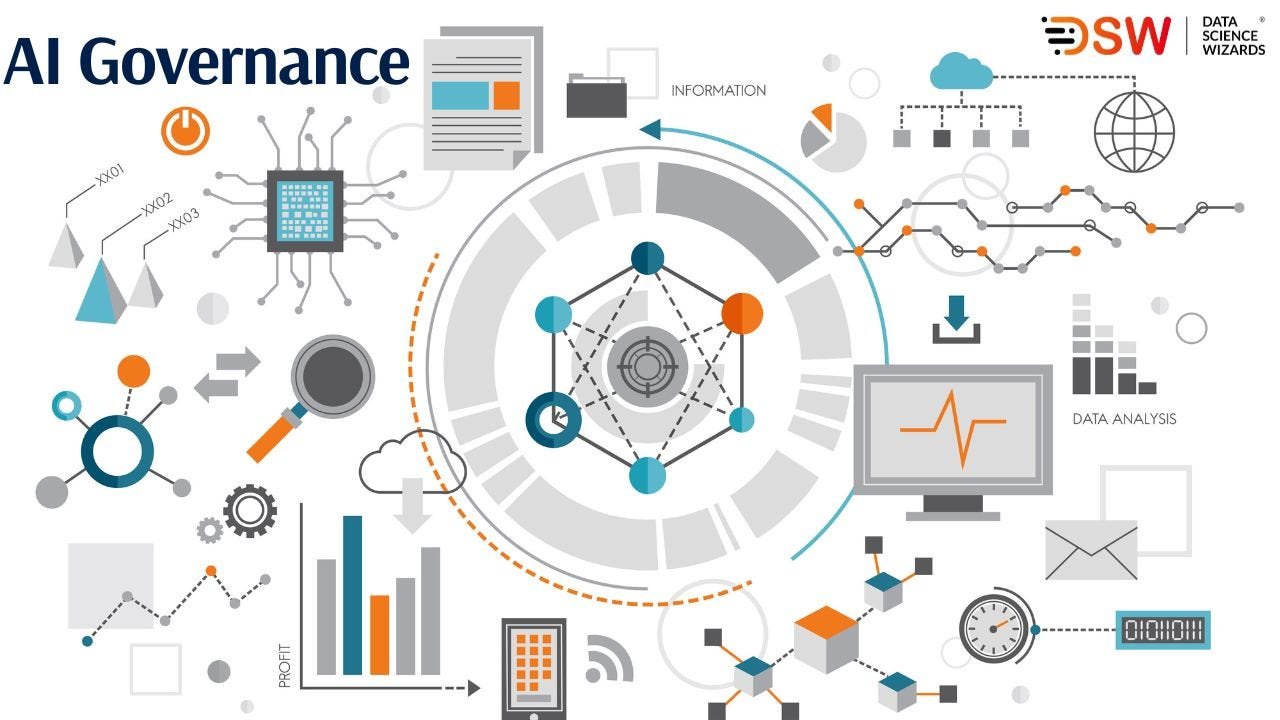AI Governance: AI is changing our lives in healthcare, transportation, and more. But it’s growing fast, bringing new challenges in economics, ethics, and laws. That’s why AI governance is super important. Those in charge need to find a balance between encouraging innovation and using AI responsibly.

It’s a big job that needs teamwork between policymakers, businesses, and researchers. In this ever-changing world, AI governance is key to handling the challenges of AI’s quick progress.
What is AI Governance?
The policies, rules, laws, risk management techniques, and ethical standards put in place to guarantee AI is reliable, secure, and advantageous to society as a whole are collectively referred to as AI governance. It offers frameworks for dealing with problems with AI systems’ control, bias, privacy, and transparency.
Responsible development and innovation are balanced by effective AI governance. By improving AI’s accountability, manageability, and alignment with moral and social goals, it increases public trust. Priority areas for AI governance consist of:
Ethics
Developing guidelines for ethically-aligned AI systems. This includes fairness, accountability, transparency, privacy and human autonomy.
Risk Management
Assessing and mitigating risks from AI systems like cybersecurity threats, economic impacts and biased decision-making.
Oversight
Monitoring AI systems through impact assessments, audits and incident reporting to ensure responsible outcomes.
Legal Frameworks
Creating or adapting laws and regulations to address AI-associated challenges around issues like liability and privacy.
Why is AI Governance Important?
AI governance is essential for several reasons:
Public Trust
It reassures the public that AI is being developed safely and for social benefit, building vital trust.
Accountability
By requiring explainability and auditability in AI systems, it improves accountability.
Oversight
Governance enables ongoing evaluation of AI risks and outcomes through standardized oversight processes.
Ethics
It aligns AI systems with ethical values through guidelines and review processes focused on fairness, transparency and reducing bias.
Safety
AI governance minimizes risks and provides processes to assess AI systems for potential safety issues.
Innovation
Governance provides guidance to foster responsible innovation of AI technologies.
Without governance, public mistrust, unmanaged risks and unethical AI development could obstruct its promising potential.
Key Elements of AI Governance Frameworks
AI governance frameworks set up doable procedures, rules, and criteria to guarantee responsible AI development, such as:
Impact Evaluations
Design and implementation of AI systems are guided by thorough analyses of potential ethical, legal, and social implications.
Risk Evaluations
early detection and mitigation of possible privacy, safety, and cybersecurity risks.
Examining and examining
By doing thorough testing and auditing, AI systems are being operated to check for bias, performance problems, and model drift.
Explainability
requiring AI providers to give users a clear explanation of the goals of the system, how the data is used, and how it operates.
Channels of Reporting
Clear reporting routes are required for AI events, complaints, and concerns by users and oversight bodies.
Standards of Accountability
In order to resolve problems found through reporting channels and assessments, providers need to have procedures in place.
Implementing Effective AI Governance
The following are crucial actions to build AI governance:
Public Input
Public conversations that are inclusive pinpoint issues and ideals that ought to be addressed by policy.
interdisciplinary Work
Collaboration amongst professionals in technology, law, ethics, and regulation is necessary for AI governance.
Flexible Methods
As issues and technology progress, governance must also change.
Syncerated Procedures
Adoption and trade are facilitated by aligning national and international regulatory systems.
Testing Governance Frameworks
Before a large-scale rollout, small-scale testing enable iterative modifications.
Ensuring AI adheres to common ethical values requires comprehensive governance based on public goals. AI governance, despite its complexity in developing across cultural contexts, aids societies in striking a balance between responsible restraints and opportunities for innovation.
The key to enabling governance systems where AI accountability is in line with democratic norms is constructive collaboration that acknowledges new risks and uncertainties alongside societal advantages.
Conclusion
AI can bring about revolutionary changes, but it also poses risks. To balance technological capabilities with ethical concerns, we need governance for fair, safe, and trusted AI.
AI governance oversees the development of AI to harness its advantages while upholding values like accountability, democracy, and openness. Collaboration among tech leaders, lawmakers, experts, and the public is key to creating an era where AI aligns with human values.
Ai governance framework, Ai governance examples, Ai governance pdf, ai governance principles, ai governance course, ai governance software, ai governance certification, ai governance ibm
